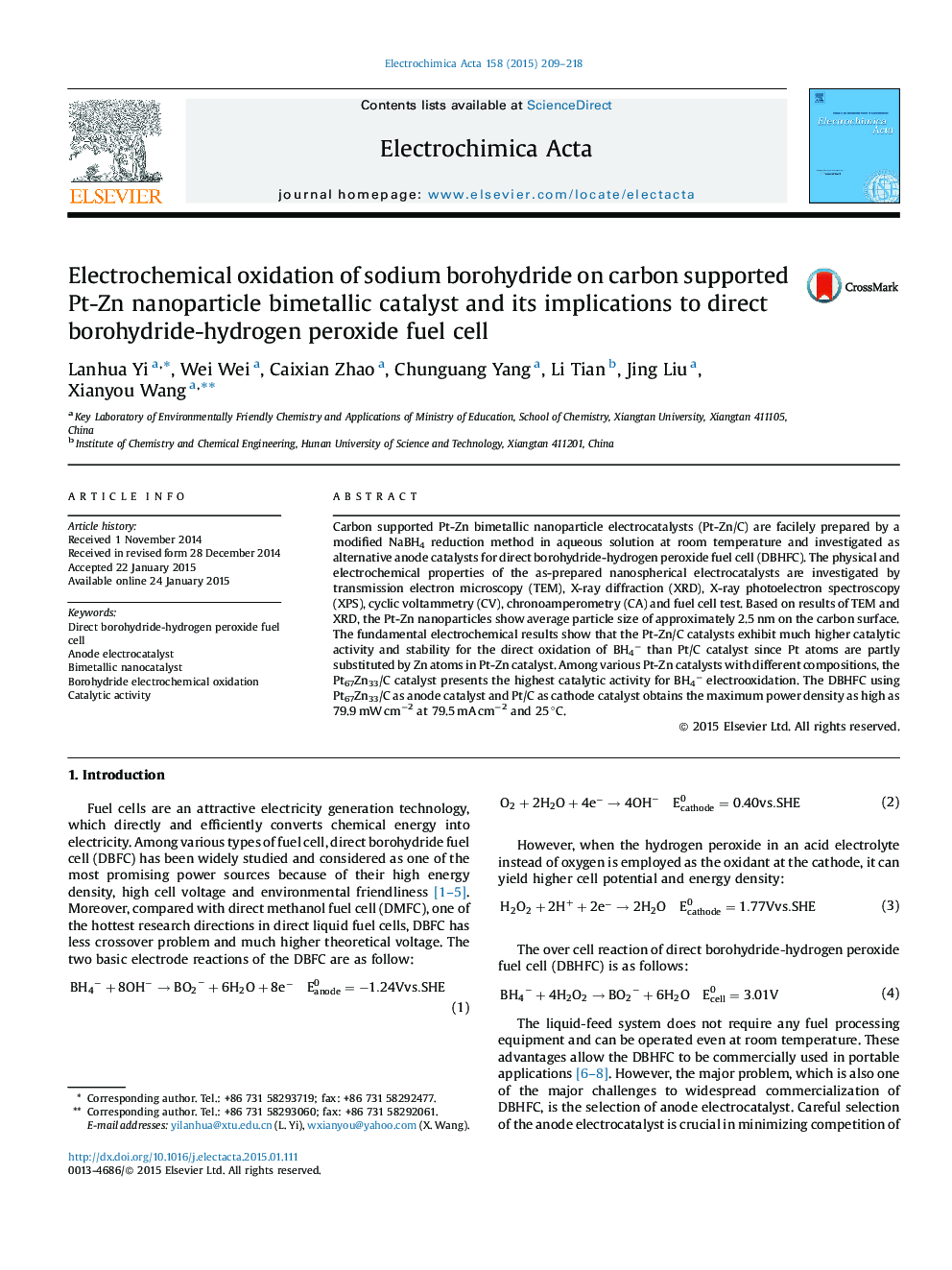| کد مقاله | کد نشریه | سال انتشار | مقاله انگلیسی | نسخه تمام متن |
|---|---|---|---|---|
| 184458 | 459576 | 2015 | 10 صفحه PDF | دانلود رایگان |

• The Pt-Zn/C catalyst as anode catalyst for DBHFC were facilely synthesized.
• The average particle size of Pt-Zn bimetallic nanoparticles is approximately 2.5 nm.
• The Zn-doping can apparently improve the catalytic activity for BH4− electrochemical oxidation.
• The maximum power density of DBHFC employing Pt-Zn/C as anode catalyst is as high as 79.9 mW cm−2 at 79.5 mA cm−2 and 25 °C.
Carbon supported Pt-Zn bimetallic nanoparticle electrocatalysts (Pt-Zn/C) are facilely prepared by a modified NaBH4 reduction method in aqueous solution at room temperature and investigated as alternative anode catalysts for direct borohydride-hydrogen peroxide fuel cell (DBHFC). The physical and electrochemical properties of the as-prepared nanospherical electrocatalysts are investigated by transmission electron microscopy (TEM), X-ray diffraction (XRD), X-ray photoelectron spectroscopy (XPS), cyclic voltammetry (CV), chronoamperometry (CA) and fuel cell test. Based on results of TEM and XRD, the Pt-Zn nanoparticles show average particle size of approximately 2.5 nm on the carbon surface. The fundamental electrochemical results show that the Pt-Zn/C catalysts exhibit much higher catalytic activity and stability for the direct oxidation of BH4− than Pt/C catalyst since Pt atoms are partly substituted by Zn atoms in Pt-Zn catalyst. Among various Pt-Zn catalysts with different compositions, the Pt67Zn33/C catalyst presents the highest catalytic activity for BH4− electrooxidation. The DBHFC using Pt67Zn33/C as anode catalyst and Pt/C as cathode catalyst obtains the maximum power density as high as 79.9 mW cm−2 at 79.5 mA cm−2 and 25 °C.
Journal: Electrochimica Acta - Volume 158, 10 March 2015, Pages 209–218